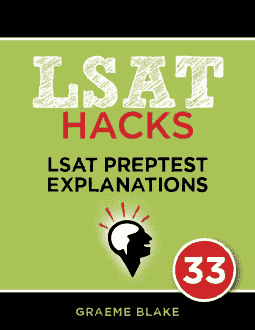This is an explanation for passage 4 of LSAT preptest 33, the December 2000 LSAT. This passage is a summary of Bentham’s reforms to evidence law.
This section has paragraph summaries and an analysis of the passage, links to the explanations for the questions are below.
Paragraph Summaries
- Evidence law in Bentham’s time was similar to ours, but also strange. For example, you couldn’t testify in your own case.
- There was a reason for most rules (e.g. Hearsay: banned because you couldn’t cross examine someone not present). But such reasons often led to irrationality (relevant and reliable evidence was often excluded).
- Tradition and vested interests prevented reform. Bentham swept the old rules aside, and declared almost everything admissible apart from a few exceptions.
- Problem: some evidence is too misleading to admit. Another problem: if some evidence (confessions to priests) shouldn’t be admitted, then why not prevent the admission of other privileged evidence?
- Bentham’s non-exclusion principle is the basis of modern evidence law, even if we make more exceptions than he did.
Analysis
This passage gives a brief summary of Bentham’s reforms to evidence law. The state of the law before Bentham is described, Bentham’s reforms and principles are given, and the result is announced: Bentham’s principle underlies modern evidence law.

Want a free Reading Comp lesson?
Get a free sample of the Reading Comprehension Mastery Seminar. Learn tips for solving RC questions


Leave a Reply